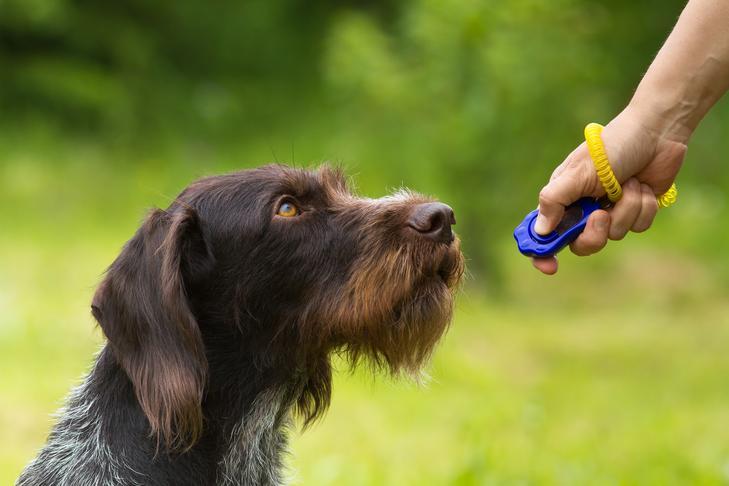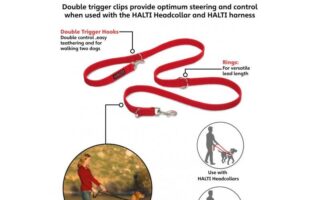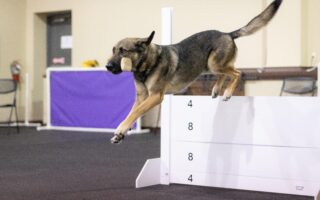Shaping Dog Training: Molding Behavior Through Patience and Precision
Imagine a world where communication between dogs and their humans transcends the limitations of language. In this realm, understanding and cooperation bloom like wildflowers in spring, rooted in a unique approach known as shaping dog training. This innovative technique harnesses the power of positive reinforcement, breaking down complex behaviors into manageable steps, allowing both pet and owner to embark on a journey of mutual growth and discovery. Whether you are a seasoned trainer or a new puppy parent, exploring the nuances of shaping can enrich your relationship with your furry companion, fostering an environment of learning that is as rewarding as it is effective. Welcome to the art of shaping dog training, where every small success paves the way for a more harmonious partnership.
Table of Contents
- Understanding the Principles of Shaping in Dog Training
- Effective Techniques for Implementing Shaping Strategies
- Common Challenges in Shaping and How to Overcome Them
- Measuring Progress: Evaluating Your Dog’s Development through Shaping
- Q&A
- Concluding Remarks
Understanding the Principles of Shaping in Dog Training
Shaping in dog training is a powerful technique that utilizes the principles of operant conditioning to facilitate learning through positive reinforcement. This method involves reinforcing small steps that lead to the desired behavior, allowing dogs to understand what is expected of them gradually. By rewarding successive approximations toward a goal, trainers can encourage their dogs to explore and experiment with different behaviors, fostering a sense of independence and confidence in their abilities. Key components of shaping include:
- Positive Reinforcement: Reward behaviors that align with the target behavior.
- Clear Criteria: Define what constitutes a step toward the final behavior.
- Gradual Progression: Slowly refine the criteria for reinforcement as the dog improves.
- Patience and Consistency: Remain patient and consistent to encourage learning.
Successful shaping takes practice and keen observation of the dog’s behavior. Trainers must be willing to adapt their techniques based on the dog’s responses, ensuring that the process remains engaging and enjoyable for both parties. To visualize the progression in shaping, consider the following table showcasing common behaviors and their corresponding shaping steps:
| Target Behavior | Shaping Steps |
|---|---|
| Sit |
|
| Roll Over |
|
Effective Techniques for Implementing Shaping Strategies
To successfully implement shaping strategies in dog training, maintaining clarity and consistency is crucial. Start by breaking down the desired behavior into smaller, achievable steps. This allows your dog to grasp each segment without feeling overwhelmed. Utilize positive reinforcement to encourage progress at every stage. For instance, if teaching your dog to roll over, begin with rewarding them for lying down first, then for turning their head, and eventually for completing the roll. In this way, each incremental success builds towards the final goal.
Incorporate tools that can aid in tracking progress and maintaining motivation. A simple tracking chart can be beneficial, where you log daily sessions and note achievements. Here’s a basic example of how you might structure such a table:
| Session | Behavior Targeted | Progress Made | Reward Given |
|---|---|---|---|
| 1 | Lie Down | Successfully did 8/10 times | Praise & Treat |
| 2 | Turn Head | 5/10 times | If successful, extra treat |
| 3 | Roll Over | 1/10 attempts | Encouragement Only |
Adjust the shaping tactics based on your dog’s responses; this flexibility ensures the learning process remains engaging. By observing reactions and tailoring your approach, you foster a harmonious learning environment. Consistent practice reinforces the behavior while celebrating the small wins along the way keeps motivation high and strengthens the bond between you and your dog.
Common Challenges in Shaping and How to Overcome Them
Training a dog using the shaping method can present several hurdles that require both patience and strategy. A common challenge many trainers face is the inconsistency in rewards. When the reinforcement given is not timely or specific to the desired behavior, dogs can become confused, leading to frustration for both the animal and the trainer. To combat this, it’s essential to establish a clear pattern of reinforcement. Consider using a combination of verbal cues, treats, and physical affection to create a rich reward system. It can also be beneficial to maintain a consistent training schedule, as dogs thrive on routine and predictability.
Another significant challenge arises from a dog’s limited attention span. Young or excitable dogs might struggle to focus on the task at hand, making shaping an arduous process. To tackle this issue, break down the behavior into smaller, more manageable steps. Remove distractions from the environment and ensure training sessions are kept short and engaging. A good rule of thumb is to keep sessions to about 5-10 minutes, interspersed with play or relaxation breaks. This approach not only maintains the dog’s interest but also reinforces positive associations with the training process.
Measuring Progress: Evaluating Your Dog’s Development through Shaping
Tracking your dog’s growth and development through shaping requires keen observation and responsiveness. One effective method is to maintain a training journal, allowing you to document your dog’s behaviors and progress over time. This journal can include:
- Date of training sessions: Keeping a record helps in identifying patterns in learning.
- Specific behaviors targeted: Note which behaviors you’re focusing on during each session.
- Progress indicators: Define how you will measure improvement, such as the number of successful repetitions or the time taken to complete a task.
- Challenges encountered: Reflect on any difficulties faced and how you addressed them.
Moreover, utilizing a simple table can be beneficial in evaluating your dog’s responses to various shaping techniques. Consider tracking elements such as response consistency and reinforcement effectiveness. Here’s a quick example of a table you might maintain:
| Behavior | Sessions Completed | Consistency (%) | Reinforcement Method |
|---|---|---|---|
| Sit | 10 | 80% | Clicker Reward |
| Stay | 8 | 60% | Verbal Praise |
| Come | 12 | 75% | Treats |
By engaging with these methods and tools, you can create a vivid picture of your dog’s learning journey, celebrating achievements and tailoring your approach to foster even greater progress in your shaping endeavors.
Q&A
Q&A on Shaping Dog Training
Q1: What is shaping in dog training?
A1: Shaping is a method of training that involves reinforcing small, successive steps towards a desired behavior. Rather than expecting the dog to perform the full behavior right away, trainers reward incremental progress. For example, if you want your dog to roll over, you might first reward them for lying down, then for shifting onto their side, and finally for completing the roll.
Q2: How does shaping differ from traditional dog training methods?
A2: Traditional dog training often relies on commands and leash corrections, focusing on a direct teaching approach. Shaping, on the other hand, emphasizes positive reinforcement and encourages the dog to figure out what behaviors will earn rewards. This can lead to a more relaxed and engaging learning experience for both the dog and the trainer.
Q3: What are the benefits of using shaping in dog training?
A3: Shaping can enhance communication between you and your dog, improve the dog’s confidence, and foster a playful learning atmosphere. Dogs learn to explore behaviors creatively, which not only makes them more adaptable but also strengthens the trainer-dog bond through positive interactions.
Q4: Can you provide an example of how to shape a specific behavior?
A4: Certainly! Let’s say you want to teach your dog to fetch. Start by tossing a ball a short distance and rewarding your dog for simply looking at the ball. Next, reward them for taking a step towards it. Once they are consistently doing that, reward them for picking it up. Gradually, increase the distance and complexity, giving treats for every step closer to completing the fetch. This gradual approach helps your dog understand and achieve the desired behavior.
Q5: What tools or techniques are useful in shaping training?
A5: Tools like clickers can be incredibly effective for shaping, as they provide a clear signal to your dog that they have performed a desirable action. Treats, toys, or any positive reinforcement that your dog values can also motivate them during training. Timing and consistency are crucial; the reward should be given immediately after the desired behavior to help the dog make the connection.
Q6: Is shaping suitable for all dog breeds and ages?
A6: Yes! Shaping can be beneficial for dogs of all breeds and ages. Puppies are particularly receptive to shaping, as they are eager learners, while older dogs can benefit from the mental stimulation. However, be mindful of individual temperaments and physical capabilities, adjusting the training approach accordingly.
Q7: How do I maintain my dog’s engagement during shaping exercises?
A7: Keep sessions short and fun, aiming for 5 to 10 minutes to maintain your dog’s attention. Incorporate variety by introducing different behaviors to shape, and ensure your training environment is free of distractions. Celebrate each small success, and don’t forget to mix in plenty of playtime to keep the atmosphere lively!
Q8: Are there any common mistakes to avoid when using shaping techniques?
A8: Yes, a few frequent pitfalls include expecting too much too soon, being inconsistent with rewards, or failing to mark the desired behavior effectively. It’s vital to stay patient and adjust the difficulty level based on your dog’s progress. Remember, shaping is about collaboration and encouragement, not frustration.
Q9: How can I get started with shaping training?
A9: Begin by selecting a simple behavior you’d like to teach and prepare your treats or rewards. Find a quiet space with minimal distractions, and take it one small step at a time. Be observant, and most importantly, have fun! The journey of education can be just as rewarding as the results.
—
End of Q&A
Feel free to explore shaping as a training method; it opens up a world of discovery and connection for you and your furry friend!
Concluding Remarks
As we conclude our exploration of shaping in dog training, it’s clear that this technique is more than just a method; it’s a bridge to deeper understanding between you and your canine companion. By leveraging the principles of positive reinforcement and incremental learning, you create a space where curiosity and confidence can flourish.
Whether you’re teaching a complicated trick or simply encouraging good behavior, shaping transforms each session into an opportunity for connection, patience, and joy. Remember, every small step contributes to the bigger picture of your dog’s learning journey. As you embark on this rewarding adventure, embrace the spontaneity, celebrate the progress, and above all, enjoy the unique bond that develops through this artful practice. Here’s to shaping not just behaviors, but also a lifetime of shared experiences and unconditional love with your furry friend. Happy training!



